In this series that explores religion in Aotearoa, Te Ahi Kaa talks with Māori about their faith.
This week, Bishop of Te Tairawhiti Donald Tamihere shares his story.
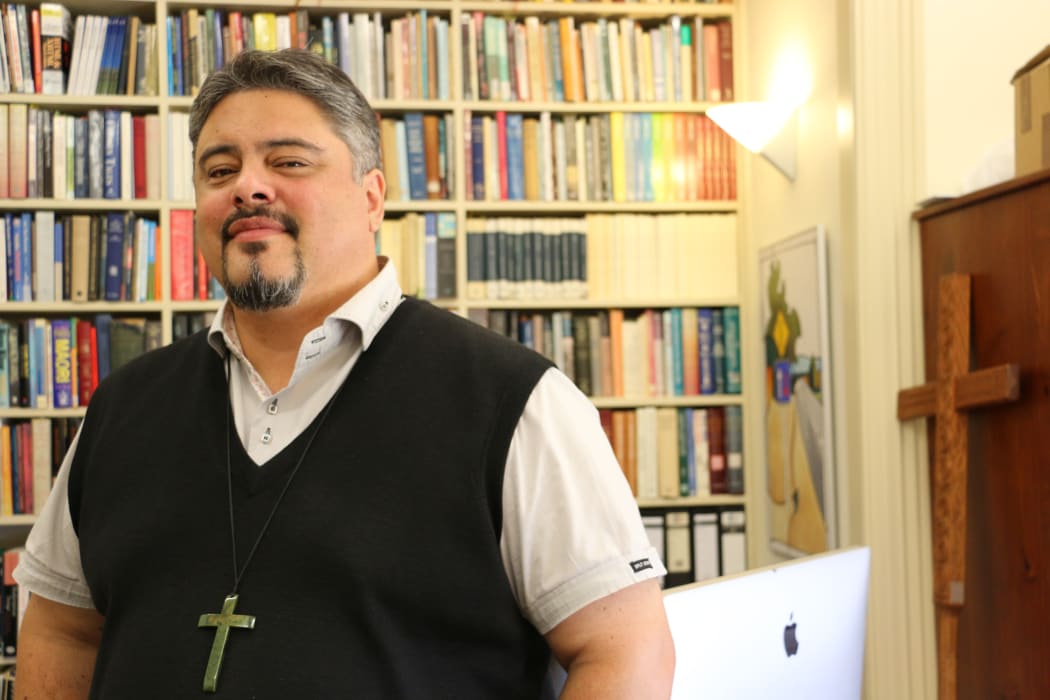
Bishop Don Tamihere in his office at Te Raukahikatea house, Gisborne. Photo: RNZ/Justine Murray
Don Tamihere was ordained as Bishop of Te Tairawhiti in March this year, succeeding the late Archbishop William Brown Turei (1924 – 2017).
His region covers the eastern seaboard that includes Potikirua near Cape Runaway, Gisborne; Hawkes Bay and just above the Wairarapa near the Manawatu River.
According to the last census, there are 17,000 Māori in the region who identify as Mihingare (Anglican).
A self-described ‘coastie kid’, Bishop Tamihere grew up in Te Puia Springs and Tokomaru Bay. At 12 he was confirmed by Bishop Peter Atkins at Mangahanea Marae in Ruatoria.
Confirmation is a practise of the church where a young person from the age of 12 or 13 takes responsibility for their own faith and reaffirms their relationship with God.
The practise mirrors the Hebrew coming-of-age ritual Bar Mitzvah.
"I’ve come to realise the Tai Rāwhiti context is quite special because whakapono is part of our DNA.”
At age 15, Don was teaching Bible studies and at 19 he attended Te Nikau Bible College, Paraparaumu.
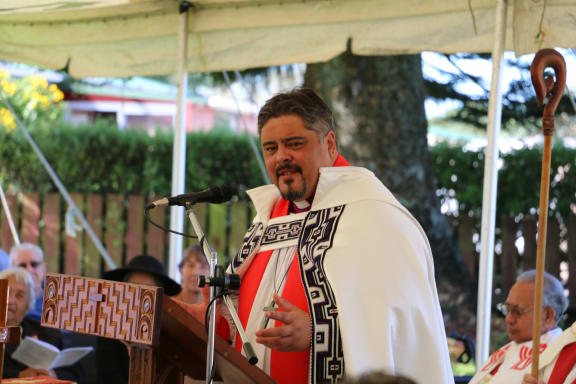
Bishop Don Tamihere delivers a Kauhau at the ordination ceremony, Waikari Marae, Tauranga. Photo: RNZ/Justine Murray
Bishop Don met his wife at Te Nikau and they were married in 1994. The marriage was officiated by the late Archdeacon Hone Kaa (1941 – 2012).
Don attended Saint John’s Theological College in 1997 and graduated with a Masters degree in Theology.
He stayed in Auckland for eight years and today is the Dean of Te Rau College in Gisborne.
The name on his office door reads "The Most Reverend Brown Turei" - he says he it may be on there for a while.
Above the doorway of this office is a carved tāonga gifted to him at his ordination. It represents him and his wife, his waka and the twin babies the couple lost a few years ago.
The shark depicts the whakatauki (proverbial saying) Kaua e mate wheke, me mate ururoa - Do not die like an octopus, instead die like a hammerhead shark.
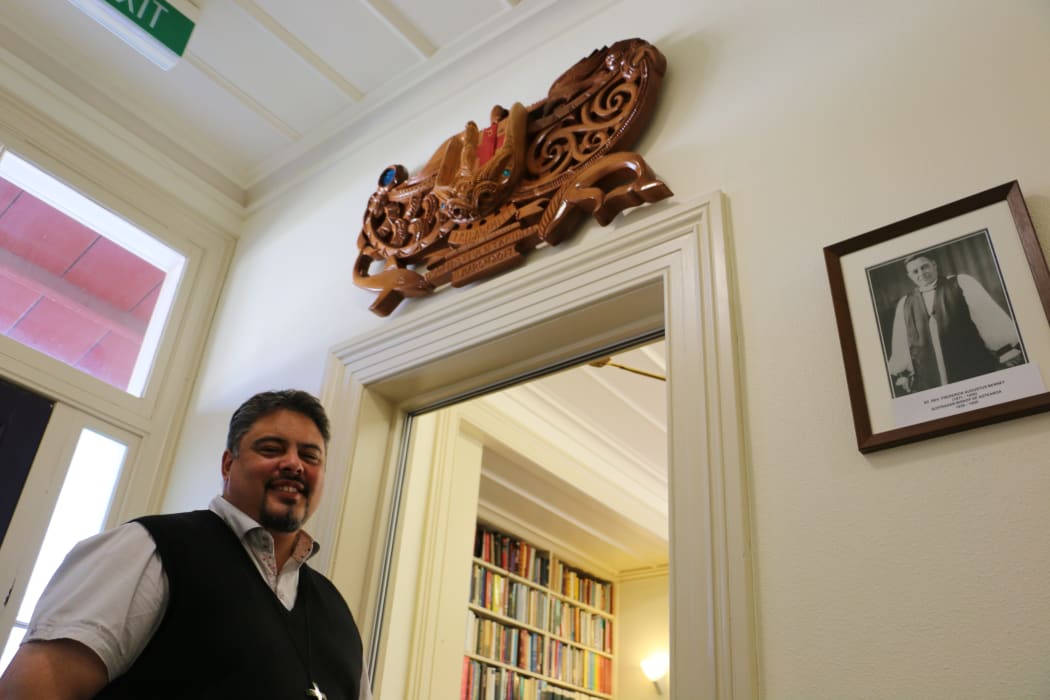
The carving upon the door was a tāonga given to him at his ordination in March this year. Photo: RNZ/Justine Murray
Te Raukahikatea House in Gisborne was built in 1876 by the Williams family and was the Māori Theological College from 1882.
The building is made of native pine. The word 'rau' is said to be about growing, flourishing and reaching out.
The hallways display portraits of the Anglican clergy that include a Tapestry of a list of the first Māori Ministers of the first Synod of the Diocese of Waiapu, 1861.
“We have a saying here - we weren’t converted, we adopted it, and it added that wonderful extra dimension to what we already were.”
There is a portrait of the late Bishop of Aotearoa Whakahuihui Vercoe (1928 – 2007) who was instrumental in creating five regions of the Anglican Church. Te Tai Tokerau (Northland/Auckland) Te Manawa o te Wheke (Central North Island) Te Tai Rawhiti (East Coast) Te Upoko o te Ika (Taranaki/Wellington) and Te Waipounamu (South Island).
Most of the Mihingare (Anglican) churches are in rural areas of the East Coast and Hawkes Bay.
"All of our churches are in rural settings still, part of that is the way the Anglican Church was restructured. So typically we went for the kaupapa but the facility and resource didn’t follow, so we had to re-approach our mission and begin building like our ancestors did.”
Ordination ceremony
A Liturgy of the Eucharist and Ordination to the Diaconate and the Priesthood was hosted by Te Hui Amorangi o Te Manawa O Te Wheke at Waikari Marae, Tauranga where Bishop Don delivered a Kauhou (speech).
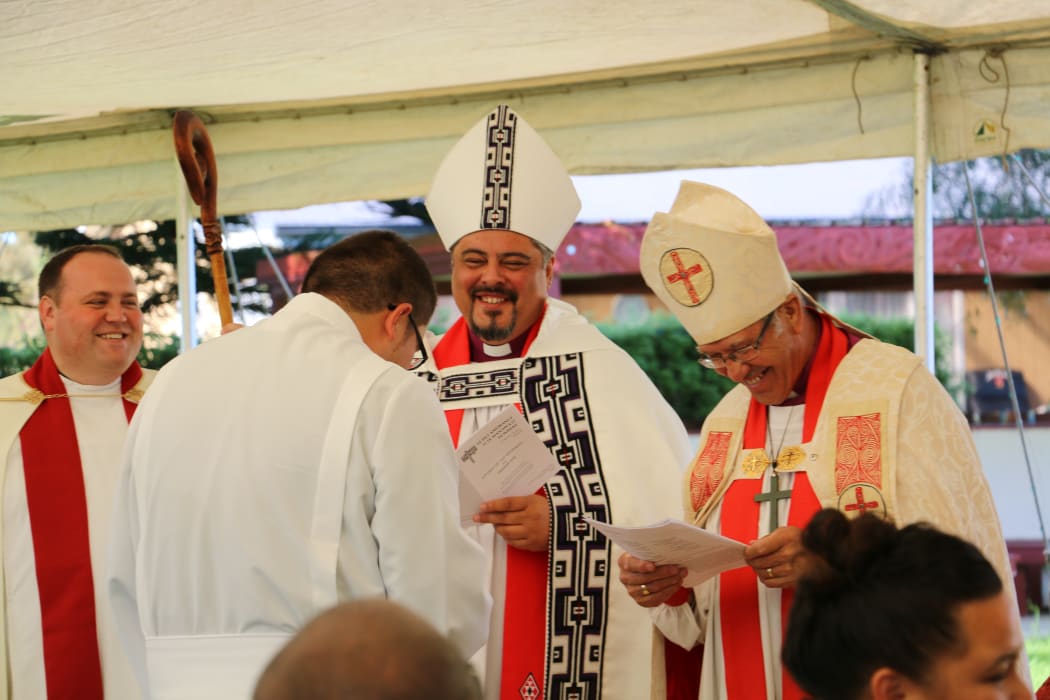
Bishop Don Tamihere at an ordination ceremony, Waikari Marae, Tauranga. Photo: RNZ/Justine Murray
Moana Te Kani returned to the Anglican Church in the last six years and today she is the Priest-in-Charge at Tauranga Moana Māori Mission.
Faith was a large part of her upbringing; her grandmother was Ringatu but after she bore 21 children she found that adhering to the kawa (practices) a hard task, so she converted to the Anglican. Moana's father was Anglican and her mother was Ratana.
Traumatic experiences in Moana's life have reaffirmed her own faith after her mum was in a serious car accident that left her in a coma for two years.
“I saw my dad get on his knees and ask God to allow my mum to live because they didn’t think she would after being in a coma… and she lived, and he served his promise to God... so he became a Mihingare Minister, Canon in the Anglican Church in the Whanganui area.”
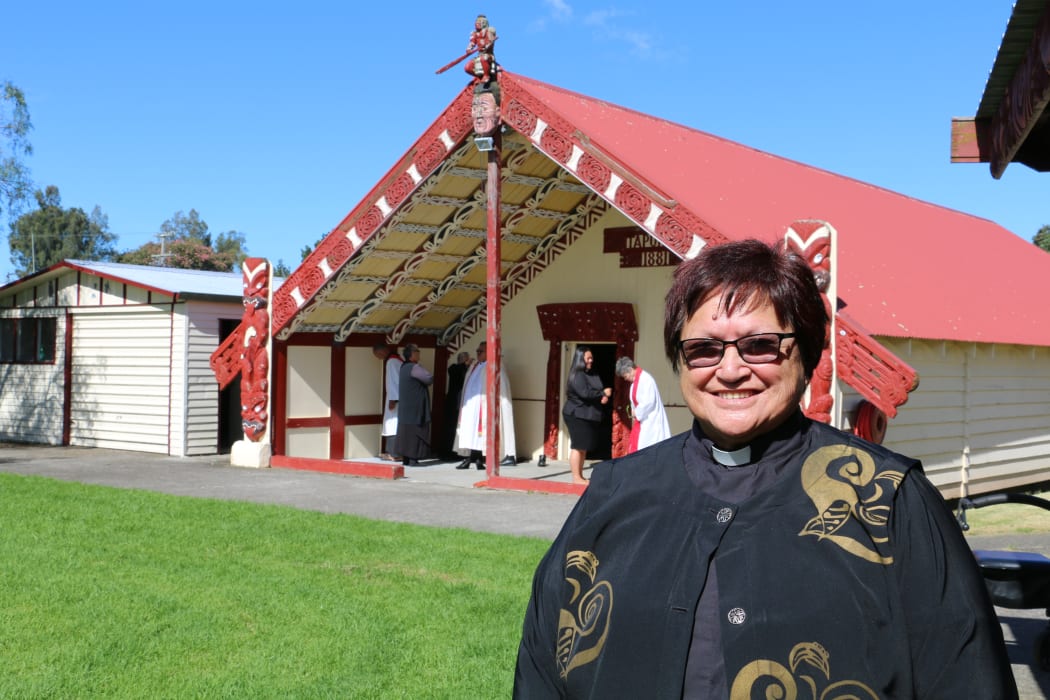
Moana Te Kani is Priest-in-charge at Tauranga Moana Māori Mission. Photo: RNZ/Justine Murray
Te Rau Kahikatea House - In Bishop Don's words
“Te Rau Kahikatea was built in 1876 by the Williams whanau.
“From 1882 to 1922 this is where every Māori minister in the country came to train, there is huge legacy here.
“So I have tupuna that trained here, a lot of us that work here have those tupuna connections."
"In 1922, as the politic of the church would have it, they decided that they would no longer fund this Māori college and they would shift funding to Saint John’s College in Auckland which is predominantly popular by Pākeha students at the time.
“So that had a profound effect on ministry training, where we were heavily populated with Māori ministers began to thin out in the following decades.
“We are only starting to address that now, this (the building) was sold into private hands in the nineties by the church despite Māori protest, and under Arch Bishop Brown’s leadership we were able to purchase it back and began to redevelop it with the hope of having that mission restored in our midst. So these are the actions we are taking to address the needs of our people.
“There is no shortage of ministry demand, we are always getting called up to help whanau, we provide tikanga and karakia, but in order to fulfil that need we have to identify and nurture the young people that are called and are capable.”
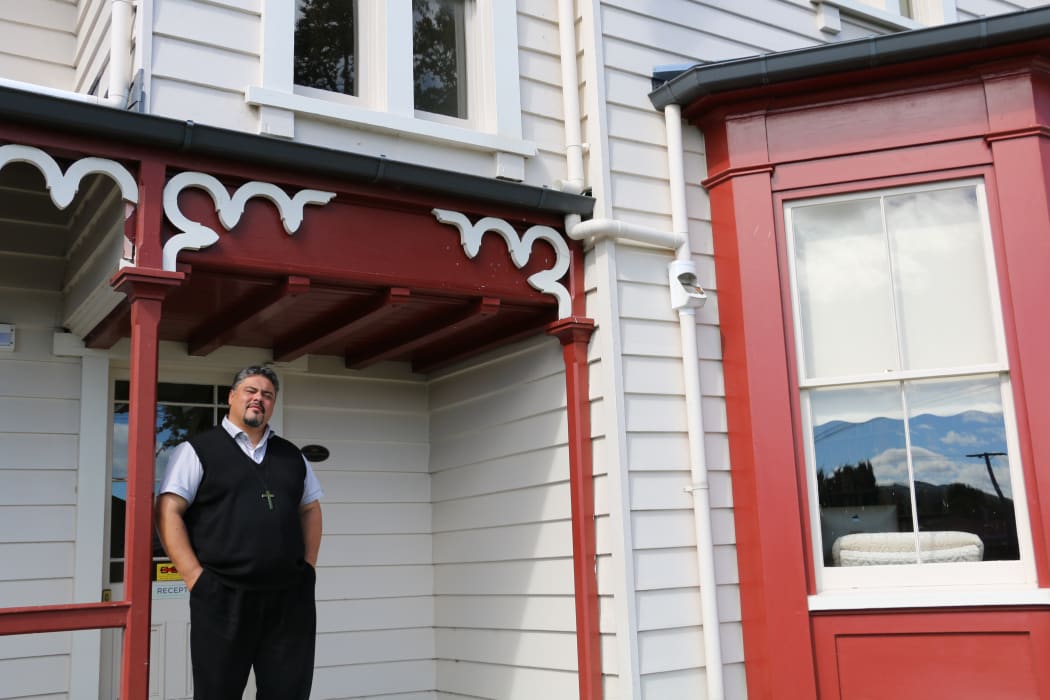
Te Rau Kahikatea house was built in 1876 by Williams Family. It was the training college for many māori Ministers from 1882 - 1922. Photo: RNZ/Justine Murray

